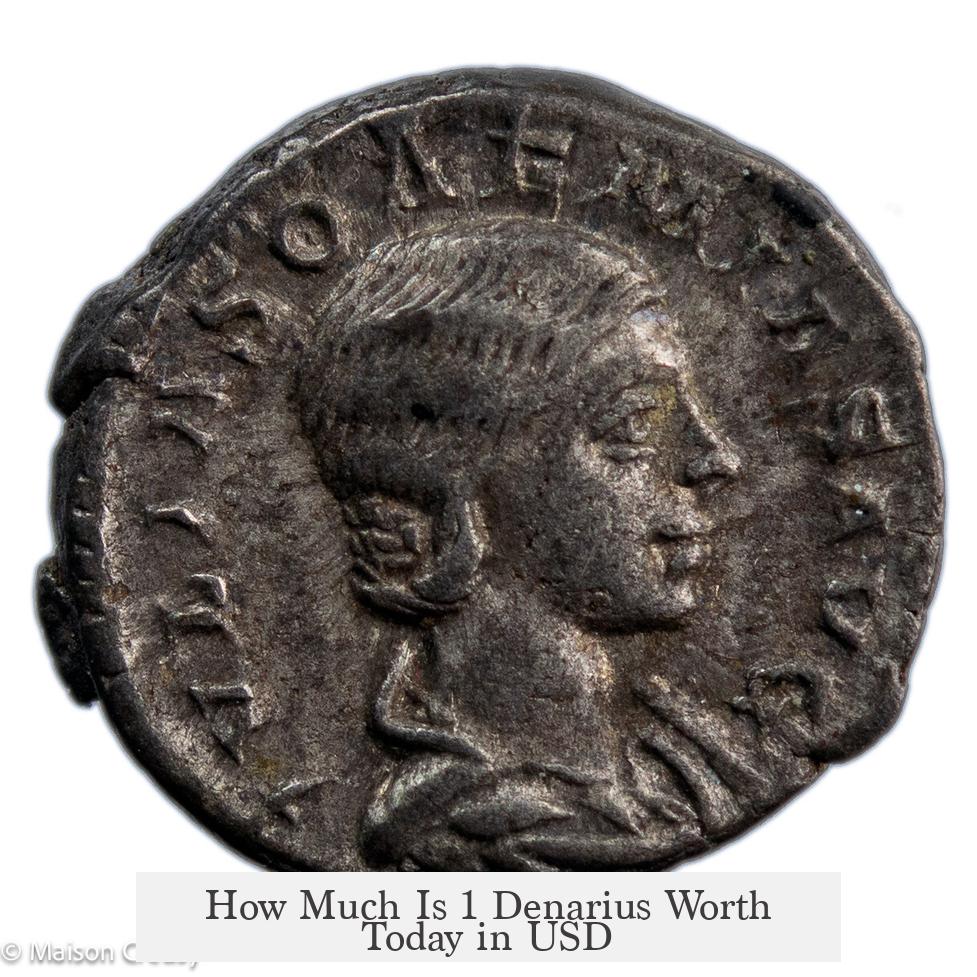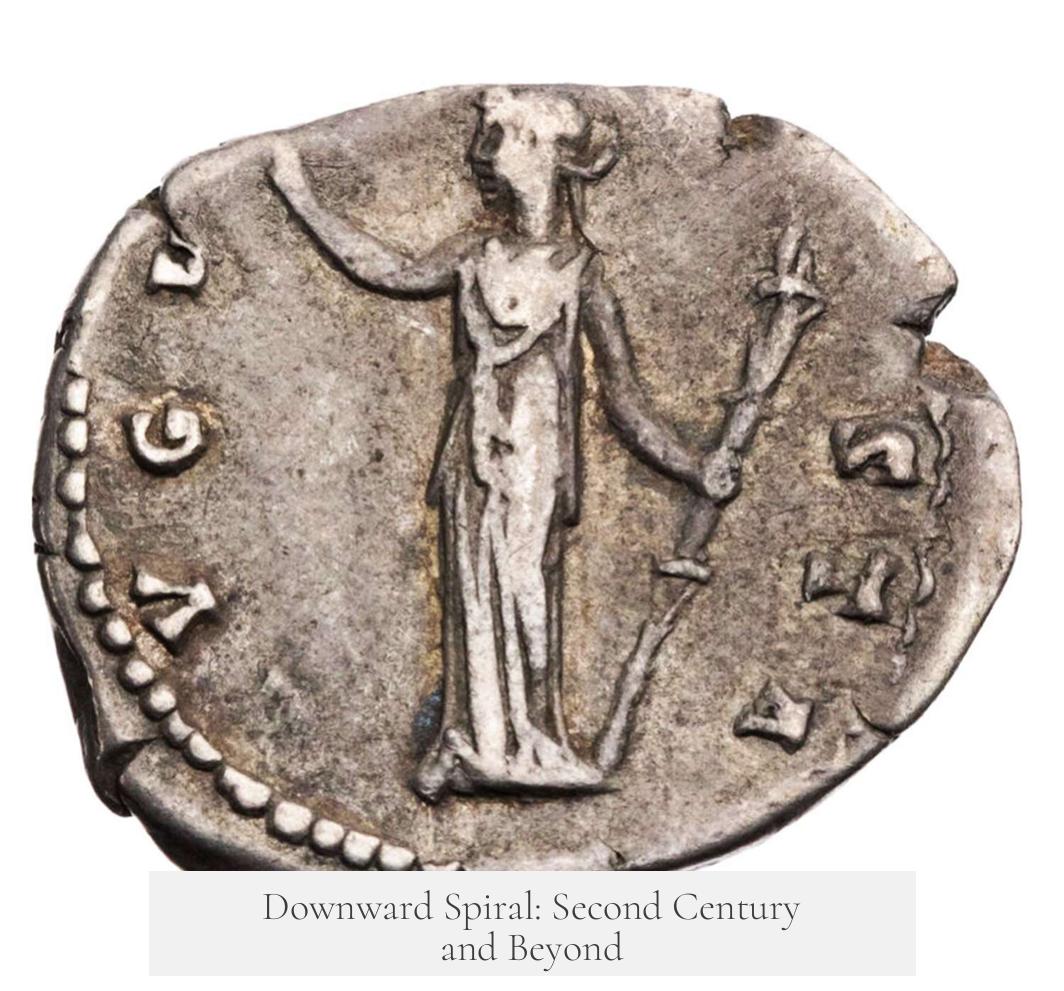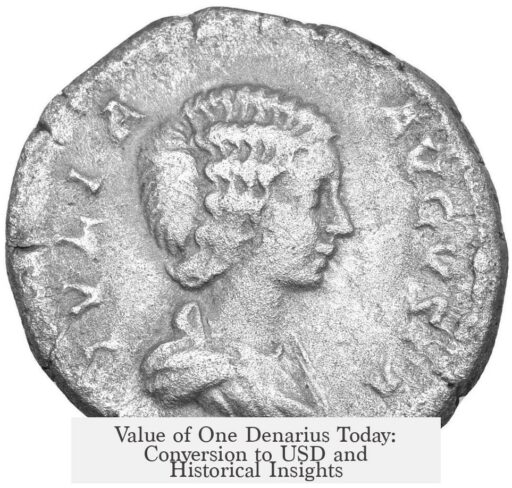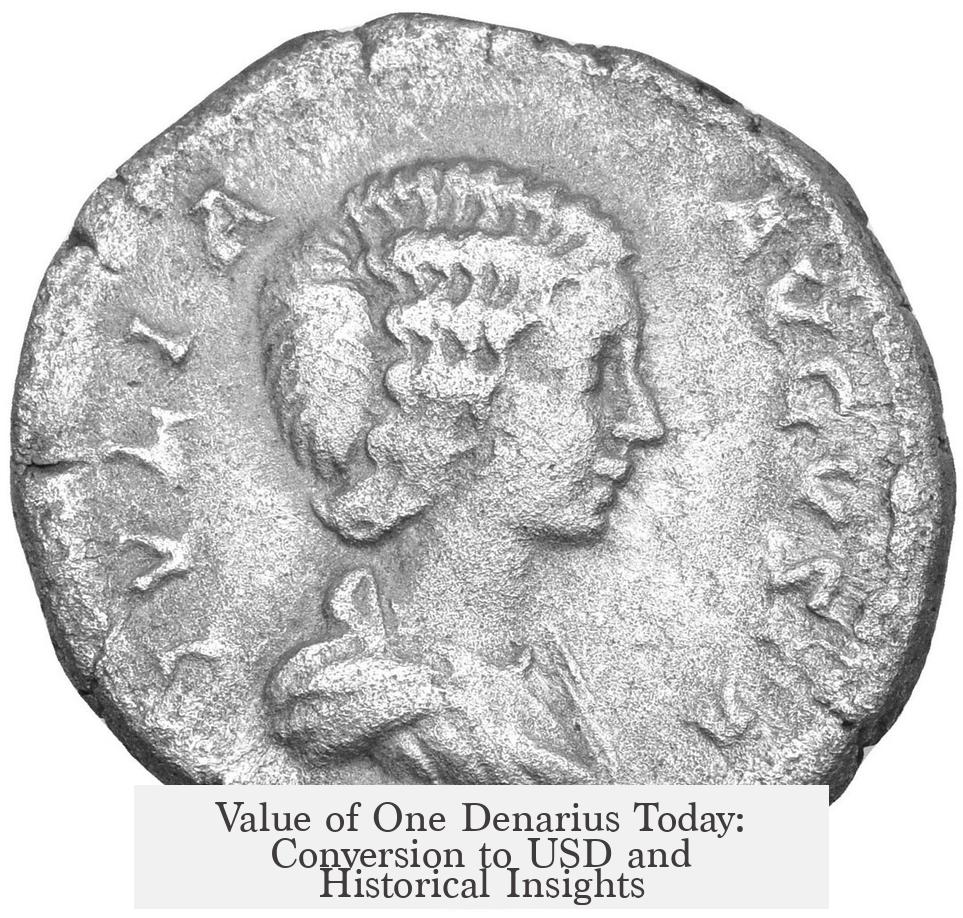The value of 1 denarius today in USD varies widely depending on its historical period and silver content, ranging roughly from 10¢ to $100.
The denarius’s worth changed significantly over centuries. Initially, it weighed about 6.8 grams and was nearly pure silver (98%). Over time, its weight and purity decreased. For example, by the early third century, the coin weighed closer to 2.6 grams and had only 5% silver content. These changes affected its intrinsic value significantly.
Value also depends on economic context. During the late Roman Republic and early Empire, a denarius equaled a daily wage for an unskilled worker. This makes its rough modern equivalent between $10 and $100, depending on how one compares wages or buying power.
By the second century, the denarius became smaller and less pure, about 80% silver. It was worth about half or less of its earlier value. Today, this would translate to approximately $2 to $50. The decline reflected inflation and economic challenges of the era.
By the mid-third century, the coin’s debasement was severe. It had almost no silver purity, comparable in buying power to a modern quarter. Several denarii would be needed to buy a cheap item. This places its value in the range of 10¢ to 25¢.
Later reforms attempted to restore the coin’s worth, allowing it to regain some purchasing power. However, it never returned to higher values, stabilizing between $1 and $10.
| Period | Silver Content | Estimated Value Today (USD) |
|---|---|---|
| Late Republic / Early Empire | ~98% | $10 – $100 |
| Second Century | ~80% | $2 – $50 |
| Mid Third Century | ~5% | 10¢ – 25¢ |
| Post-Reform Attempts | Varied | $1 – $10 |
Comparing ancient coin values to modern currencies involves uncertainty. Economic conditions, purchasing habits, and standards differ greatly. The denarius’s fluctuating weight and purity complicate direct comparisons.
- The denarius’s silver content and weight fell over centuries.
- Its value ranged from a daily worker’s wage to mere pocket change.
- Modern equivalents range broadly between 10¢ and $100.
- Economic context influences estimated value significantly.
How Much Is 1 Denarius Worth Today in USD?

Short answer: it varies wildly. The value of 1 denarius in today’s US dollars depends heavily on when in history you place the coin. This Roman silver coin’s worth changed drastically over the centuries, influenced by its weight, silver content, and the shifting economic landscape of ancient Rome. So, grab your historical magnifying glass, and let’s explore what a denarius is really worth today.
Wondering, “Is it worth a dime or a hundred bucks?” You’re not alone. The denarius isn’t just a relic collecting dust. It’s a window into the Roman economy and even helps us think about inflation and money’s changing value through time. Intrigued? Let’s peel back the layers.
Why Does the Denarius Value Vary So Much?
First off, it’s important to realize the denarius didn’t have a fixed value across its long lifespan. Coins back then weren’t like today’s standardized dollars. The denarius went through several changes. Initially, it packed a serious punch — roughly 6.8 grams of nearly pure silver. By the time the Roman Empire hit its stride, it shrank to less than 4 grams. Later, the metal got seriously diluted.
Under Emperor Tiberius, around 14-37 AD, the denarius was about 98% pure silver, making it very valuable. But fast forward to the late third century AD, and that purity dropped to a meager 5%. Imagine paying for a coffee with a coin that once was a silver blockbuster but now barely glints in the light.
The Early Empire Denarius: Worth Some Serious Cash
Back in the late Roman Republic and early Empire (think Julius Caesar, Augustus), a denarius was basically a day’s wage for an unskilled laborer. Trying to translate that into today’s money? Experts estimate that’s roughly $10 to $100 depending on your method.
Why such a broad range? Well, comparing ancient coins to modern money isn’t straightforward. Inflation, purchasing power, changes in what constitutes a “day’s wage,” and even lifestyle differences throw a wrench in any direct math. Think of it like trying to compare apples and chariots—both valuable, but… not quite the same thing.
Downward Spiral: Second Century and Beyond

By the second century AD, heavy inflation and economic pressures led to a smaller coin, nearly 80% silver purity but lighter in weight. Its value dropped roughly halfway — experts peg the modern equivalent of the denarius at $2 to $50. That’s quite the nosedive but still meaningful coinage in Roman times.
By the middle of the third century, the denarius had become, frankly, pocket change. Its silver content dropped so low that several denarii were needed to buy even cheap drinks—something like 10¢ to 25¢ in modern money. Imagine paying for a coffee with a handful of coins instead of one!
Attempts were made to restore its value, but the denarius never bounced back to its early glory. Later denominations popped up, and the denarius settled into a lower plateau. In later years, its worth ranged between $1 and $10 in modern terms. A modest comeback, but nothing like Caesar’s heyday.
Why Does This Even Matter Today?
You might wonder why anyone cares about converting an ancient Roman coin’s value to USD. It’s more than just curiosity. Knowing this helps historians, economists, and collectors understand economic stability, inflation, and societal wealth over time.
For example, if a Roman soldier earned one denarius a day, and that’s around $20 today, what does that say about the cost of living then? How did inflation impact their lifestyle? Plus, coins tell stories about political regimes, wars, and even social structures.
Practical Tips If You Ever Find a Denarius
- Don’t assume the old coin in your hand equals $100 just because you heard that from a dusty history book. Check its era and condition.
- Consult coin experts or numismatists—they can help you pin down its real market value.
- Compare purity and weight—these are your two biggest clues to the coin’s worth.
Even worn coins with low silver content have value as collectors’ items. Rarity and historical context can push prices higher than silver content alone.
In Summary: What Is One Denarius Worth Today?
The clearest takeaways are:
- Amount varies greatly with historical period.
- Early denarius (late Republic / early Empire): roughly $10–$100 in today’s USD.
- Second century denarius (reduced silver content and weight): about $2–$50.
- Third century diluted coin (low silver): roughly 10¢ to 25¢.
- Later attempts partially restored value to $1–$10 range.
The bottom line? Anywhere from a dime to a Benjamin Franklin. The key is to understand which denarius you’re talking about.
Next time you see a Roman coin in a museum or auction, remember: its story lies not just in silver but in history, society, and economics. Don’t just see a coin—see the past jingling in your hand.
What determined the value of one denarius in ancient times?
The value depended mainly on its silver content and weight. Early denarii had about 98% silver and weighed around 6.8 grams. Later versions had less silver and weighed less, which lowered their worth.
How much would one denarius be worth today compared to a day’s wage?
In the late Republic or early Empire, one denarius was roughly a day’s pay for an unskilled worker. Its modern equivalent is estimated between $10 and $100.
Why does the estimated worth of a denarius vary so much?
The coin’s value changed over centuries due to debasement and inflation. It ranged from about 10 cents to as much as $100 depending on the era and silver purity.
What was a denarius worth during the 3rd century debasement?
By the mid-3rd century, the denarius had very little silver, making it worth about 10 to 25 cents today, similar to pocket change for small purchases.
Did the denarius ever regain its original value?
Later efforts restored some value, but it never exceeded $1 to $10 again. Inflation kept the coin’s worth below its earlier levels.




